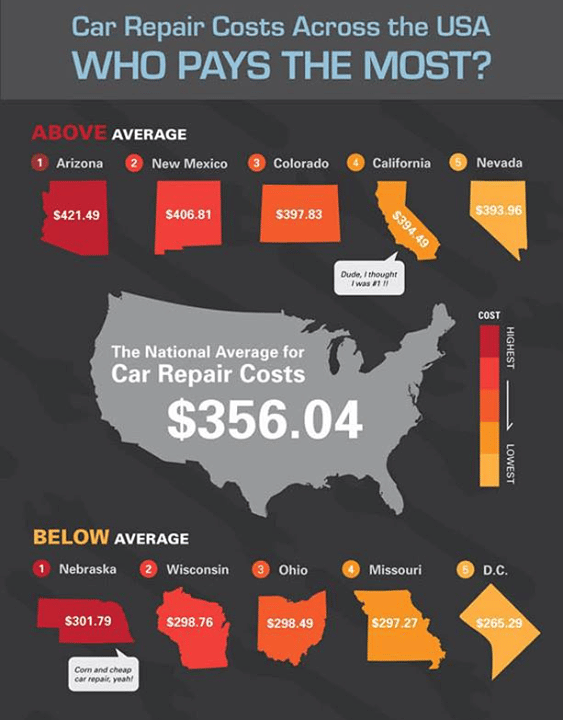Recognizing Brake Systems: Typical Problems And Exactly How To Repair Them
Recognizing Brake Systems: Typical Problems And Exactly How To Repair Them
Blog Article
Written By-Prater Murray
When it comes to your automobile's brake system, comprehending common problems can conserve you from potential security risks. From identifying brake pad wear to resolving brake liquid leaks, recognizing exactly how to tackle these issues is vital. Yet what concerning those spongy brake pedals? There's a repair for that as well. Stay tuned to find out more about these problems and the useful services that can keep you securely when driving.
Brake Pad Put On and Substitute
When it involves preserving your lorry's brake system, one important element to watch on is the wear and substitute of brake pads. Brake pads are essential parts that press versus the brake blades to reduce or quit your car. In time, these pads wear down because of rubbing, needing routine examination and substitute to guarantee your brakes operate properly.
To figure out if your brake pads require replacement, pay attention for screeching or grinding noises when you use the brakes. In addition, if your car takes longer to stop or you see resonances or pulsations when braking, it may be time to change the brake pads.
Overlooking worn brake pads can lead to lowered stopping efficiency, damages to various other brake elements, and even brake failure.
Changing brake pads is a reasonably simple procedure for lots of vehicles. Nevertheless, if you're uncertain or unpleasant executing this job, it's best to get in touch with an expert auto mechanic to guarantee correct installation and optimal brake efficiency.
Regularly checking and changing brake pads is important for your safety and the long life of your car's braking system.
Brake Fluid Leaks and Upkeep
To ensure your automobile's brake system works optimally, it is necessary to also pay attention to brake fluid leakages and upkeep. Brake liquid is crucial for sending the force from your foot on the brake pedal to the actual braking mechanism. https://oil-and-filter-change95173.blogdal.com/29643736/a-dependable-auto-mechanic-is-crucial-to-guaranteeing-your-lorry-stays-in-good-condition-yet-how-do-you-deal-with-finding-one-that-satisfies-your-individual-standards-and-requirements with brake liquid is leaks, which can happen because of deteriorated brake lines, seals, or connections. If you discover a pool or trickles under your cars and truck, it's important to address the leak quickly to prevent a possible brake failing.
On a regular basis inspecting your brake liquid degree is essential to preserving your brake system. Reduced brake liquid can cause air getting in the brake lines, which jeopardizes stopping performance.
Additionally, old or polluted brake fluid can affect the overall effectiveness of your brakes. It's advised to follow the producer's guidelines on when to transform the brake fluid, generally every 2 years.
Spongy Brake Pedal: Bleeding Brakes
If you have actually ever experienced a spongy brake pedal while driving, you recognize the importance of preserving a firm and responsive stopping system. One typical source of a squishy brake pedal is air caught in the brake lines. When air gets in the brake system, it can cause a loss of hydraulic stress, leading to that unsettling squishy sensation when you press the brake pedal.
To solve this problem, bleeding the brakes is required. Bleeding https://www.abc12.com/news/local/fire-destroys-auto-repair-shop-south-of-swartz-creek/article_df10d2cc-6757-11ec-b152-270ba855b8dd.html includes eliminating the air from the brake lines to restore correct hydraulic pressure.
To bleed the brakes, you'll need a helper to help you. Beginning by situating the brake bleeder valve on each wheel, typically located near the brake caliper. With a wrench, loosen up the shutoff and have your helper press the brake pedal while you observe any type of air bubbles appearing. Repeat this process for every wheel, beginning with the wheel farthest from the master cyndrical tube and moving more detailed.
Once you no more see air bubbles and just clear liquid emerges, tighten up the shutoff and top up the brake fluid tank as required. Hemorrhaging the brakes aids make certain a firm brake pedal and boosts overall braking efficiency.
Conclusion
Since you comprehend typical brake problems and just how to repair them, you can guarantee your automobile's safety and performance. Keep in mind to listen for indication like shrieking noises or mushy brake pedals, and address them without delay. Regular upkeep and timely replacements are crucial to maintaining your brakes in top problem. Stay proactive and mindful to your brake system to appreciate safe and trustworthy driving experiences.
